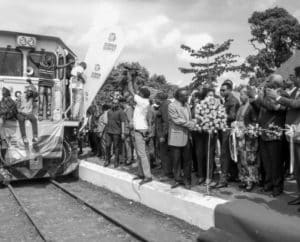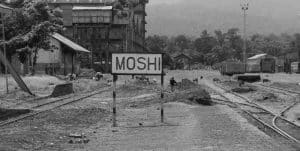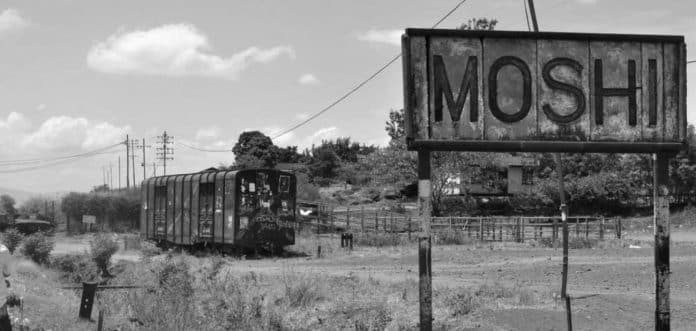Introduction to the Moshi-Tanga Line
Nestled at the base of the iconic Mount Kilimanjaro, the town of Moshi serves as a gateway to one of Tanzania’s most renowned natural wonders. However, Moshi’s significance extends far beyond its proximity to the towering peak. It is the critical junction where the Moshi-Tanga Line, a vital component of Tanzania’s railway network, connects the region to the country’s larger transportation infrastructure.
The Moshi-Tanga Line, a narrow-gauge railway, has a rich history that dates back to the early 20th century. Its construction was a testament to the colonial ambitions of the German Empire, who sought to establish a reliable transportation system to facilitate the movement of goods and people across their East African territories.
Historical Significance of the Moshi-Tanga Line
The Moshi-Tanga Line was first conceived in the late 1800s as part of a larger plan to connect the coastal city of Tanga with the hinterlands of German East Africa. Construction began in 1893 and was completed in 1912, linking Tanga to the town of Moshi, located at the base of Mount Kilimanjaro.
This railway line played a crucial role in the economic and social development of the region. It enabled the efficient transportation of agricultural products, such as coffee, sisal, and cotton, from the fertile lands surrounding Moshi to the port of Tanga for export. Additionally, the line facilitated the movement of people, allowing local communities to access markets, schools, and healthcare services more easily.
Importance of the Moshi-Tanga Line for Kilimanjaro’s Base

The Moshi-Tanga Line’s strategic location at the base of Mount Kilimanjaro has made it an essential component of the region’s infrastructure. The railway line serves as a vital link between Kilimanjaro’s base and the broader transportation network, enabling the efficient movement of both goods and people.
For the thriving tourism industry centered around Mount Kilimanjaro, the Moshi-Tanga Line is a crucial asset. It provides a convenient and reliable means of transporting visitors, equipment, and supplies to and from the mountain’s base camps, facilitating the smooth operation of climbing expeditions and other outdoor activities.
Moreover, the line’s presence has fostered the development of Moshi as a hub for tourism-related services, such as hotels, restaurants, and outfitters, further strengthening the local economy and creating employment opportunities for the surrounding communities.
Impact of the Moshi-Tanga Line on Tanzania’s Railways
The Moshi-Tanga Line is not merely a local or regional asset; it is an integral part of Tanzania’s broader railway network. As one of the country’s oldest and most established rail lines, the Moshi-Tanga Line has played a pivotal role in shaping the evolution of Tanzania’s transportation infrastructure.
Over the decades, the line has been integrated with other rail systems, such as the Central Line and the Tazara Railway, allowing for seamless connectivity between different regions of the country. This interconnectedness has enhanced the efficiency of cargo and passenger transport, fostering economic growth and facilitating the movement of people and goods across Tanzania.
Infrastructure and Development along the Moshi-Tanga Line
The Moshi-Tanga Line has been a catalyst for infrastructure development and economic growth along its route. Towns and villages situated along the railway have experienced significant urban and industrial expansion, as businesses and industries have leveraged the line’s transportation capabilities to thrive.
In Moshi, the presence of the railway has contributed to the town’s transformation into a vibrant commercial and administrative center. The town boasts a bustling central business district, with a range of shops, markets, and service providers catering to both local residents and visitors. Additionally, the line has facilitated the establishment of various manufacturing and processing facilities, further diversifying the local economy.
Beyond Moshi, the Moshi-Tanga Line has also spurred the development of smaller settlements, with the construction of stations, warehouses, and other supporting infrastructure. These nodes of activity have become hubs for economic and social interaction, providing employment opportunities and enhancing the quality of life for the surrounding communities.
Challenges and Future Prospects of the Moshi-Tanga Line
Despite its historical significance and ongoing importance, the Moshi-Tanga Line has faced its fair share of challenges over the years. Aging infrastructure, limited investment, and operational inefficiencies have at times hampered the line’s performance and reliability.
However, in recent years, there have been concerted efforts to revitalize and modernize the Moshi-Tanga Line. Significant investments have been made to upgrade the track, rolling stock, and signaling systems, with the goal of improving the line’s safety, speed, and capacity.
Moreover, the Tanzanian government has recognized the strategic value of the Moshi-Tanga Line and has included it in broader plans to enhance the country’s overall railway network. This commitment to infrastructure development bodes well for the line’s future, as it paves the way for increased connectivity, improved service delivery, and greater economic opportunities for the communities it serves.
Moshi-Tanga Line: Connecting Communities and Fostering Economic Growth
The Moshi-Tanga Line serves as a vital artery, connecting the communities and economic hubs along its route. By facilitating the efficient movement of people and goods, the line has played a crucial role in fostering economic growth and social development in the region.
Through its integration with other rail systems, the Moshi-Tanga Line has become a key component of Tanzania’s broader transportation network, enabling the seamless flow of commerce and communication across the country. This interconnectedness has strengthened economic ties, opened up new markets, and created employment opportunities for local residents.
Moreover, the line’s presence has fostered the growth of supporting industries and services, such as logistics, warehousing, and hospitality. These ancillary businesses have further diversified the local economy, creating additional avenues for income generation and entrepreneurship.
Tourism Opportunities along the Moshi-Tanga Line
The Moshi-Tanga Line’s strategic location at the base of Mount Kilimanjaro has made it an integral part of the region’s thriving tourism industry. The railway line provides a convenient and reliable means of transporting visitors, equipment, and supplies to and from the mountain’s base camps, facilitating the smooth operation of climbing expeditions and other outdoor activities.
Beyond its utilitarian function, the Moshi-Tanga Line itself has become a tourist attraction. The scenic journey along the railway offers visitors a unique perspective of the surrounding landscapes, including the imposing silhouette of Mount Kilimanjaro and the lush, verdant countryside.
Several tourism-related businesses have emerged along the Moshi-Tanga Line, catering to the needs of visitors. These include hotels, restaurants, and tour operators, all of which have contributed to the local economy and enhanced the overall tourism experience.
Environmental Considerations and Sustainability of the Moshi-Tanga Line

As with any infrastructure project, the Moshi-Tanga Line has environmental implications that must be carefully considered. The construction and operation of the railway have the potential to impact the local ecosystem, including the fragile habitats surrounding Mount Kilimanjaro.
However, the Tanzanian government and the railway authorities have made concerted efforts to prioritize environmental sustainability in the management and development of the Moshi-Tanga Line. This includes measures to mitigate the line’s carbon footprint, protect sensitive ecological areas, and promote sustainable land use practices along the route.
Moreover, the Moshi-Tanga Line’s role in facilitating the efficient movement of people and goods has the potential to reduce the overall environmental impact of transportation in the region. By offering a viable alternative to road-based travel, the railway can contribute to a more sustainable transportation system, with lower emissions and reduced congestion.
Conclusion: The Promising Future of the Moshi-Tanga Line
The Moshi-Tanga Line stands as a testament to the power of infrastructure to transform communities, foster economic growth, and connect people across vast distances. As Tanzania continues to invest in the modernization and expansion of its railway network, the Moshi-Tanga Line is poised to play an increasingly vital role in the country’s development.
For more articles related to Railway and train travel Tanzania, click here!

































